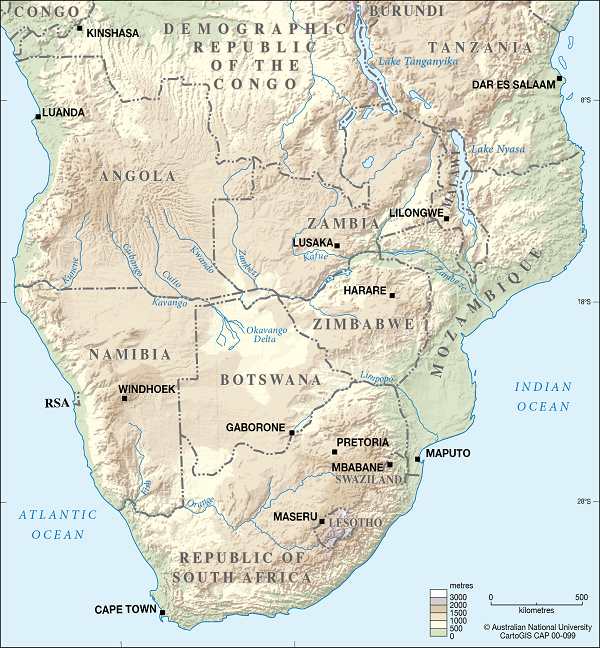South Africa’s Blackout Problem
March 20, 2019 | Expert Insights
A tropical cyclone in Mozambique that caused the death of over 140 people and also much destruction of electricity and phone infrastructure has affected the power supply in South Africa. The Mozambique government is currently working on fixing their infrastructure as soon as possible.
Background
South Africa is the southernmost country in the African continent. It is bounded to the south by 2,798 kilometers of coastline stretching along the South Atlantic and Indian Oceans; to the north by the neighboring countries of Namibia, Botswana, and Zimbabwe; and to the east and northeast by Mozambique and Eswatini; and it surrounds the enclaved country of Lesotho.
Mozambique, Zimbabwe and Malawi have been hit by a vicious cyclone that has resulted in massive outages throughout the countries. The cyclone named Idai has stranded most of its population in rural areas due to inaccessibility to roads and telephone lines. Thousands of people have been marooned due to the heavy flooding. The governments of the countries affected have begun repairing and reinstalling the needed infrastructure. They have been working hard at regularizing the affected areas.
Eskom is a South African electricity public utility that handles the power distribution in the country. The utility is the largest producer of electricity in Africa, is among the top seven utilities in the world in terms of generation capacity and among the top nine in terms of sales.

Analysis
Power outages in South Africa have increased since Saturday, March 16, 2019 due to cyclone Idai that has caused major destruction in Mozambique crippling their power lines. South Africa imports its electricity from Mozambique due to its inability to produce the necessary amount of electricity.
Although Eskom generates 95% of South Africa’s electricity it has been bogged down by mismanagement and inefficiency of its coal power plants. The state-owned entity has been part of major controversy since 2018. The company is divided into Generation, Transmission and Distribution divisions.
Eskom is said to have cut 4000 MW since Saturday although having stated that it was only cutting back upto 2000 MW. This was due to repeated faults at its coal-fired power plants. The company has turned to rotational load shedding in order to prevent total collapse. Load shedding is an intentionally engineered electrical power shutdown where electricity delivery is stopped for non-overlapping periods of time over different parts of the distribution region.
The total debt for Eskom climbed by 14 percent to R419 billion in 2018 causing the company’s service cost debt to rise by R45 billion in a year. Despite generating R26bn from operations, Eskom’s profit also dropped from R6.3bn to R671m in 2017. The company also had an increase in its employee-benefit expense causing an increase in costs.
At this point, Eskom is hoping that the government will be able to give them a bailout of R100 billion without which the company’s debt could rise to R600 billion in three years. President Cyril Ramaphosa has said that the government is working hard on coming up with a solution, and asked the citizens to pull together in order to help Eskom overcome its challenges.
The age of the power stations and their maintenance have been major factors in the underperformance of the power stations. The maintenance issues could be attributed to the technical and repair staff producing sub-standard repair work. The Medupi and Khusile power stations have failed to generate their expected power outputs since 2018 due to underperforming electric units.
Eskom also struggles with regular worker strikes for increased wages. In 2018, the strikes disrupted the flow of power as many plants were left unattended. Workers also caused damage to certain Eskom facilities, which affected supply in many areas. The standoff between the company and its workers led to the company offering a three-year wage agreement for an increase of 7.5 percent in 2018 and then 7 per cent for 2019 and 2020.
Assessment
Our assessment is that Eskom has been an economic strain to South Africa. The government could consider splitting the operations in order to ease functionality. Eskom is a publicly traded fund which means that the company’s future would also rest in the hands of its investors.
Image Courtesy: Graeme Williams, Media Club, Gordonia substation ZA 2008, CC BY-SA 2.0








Comments